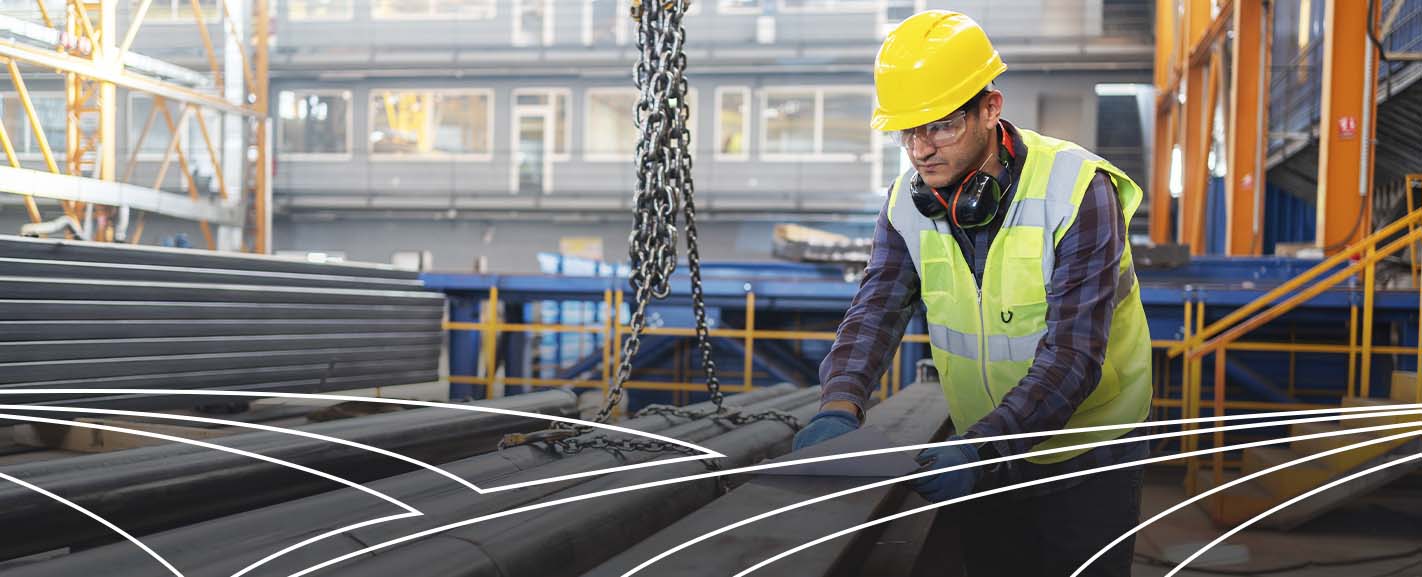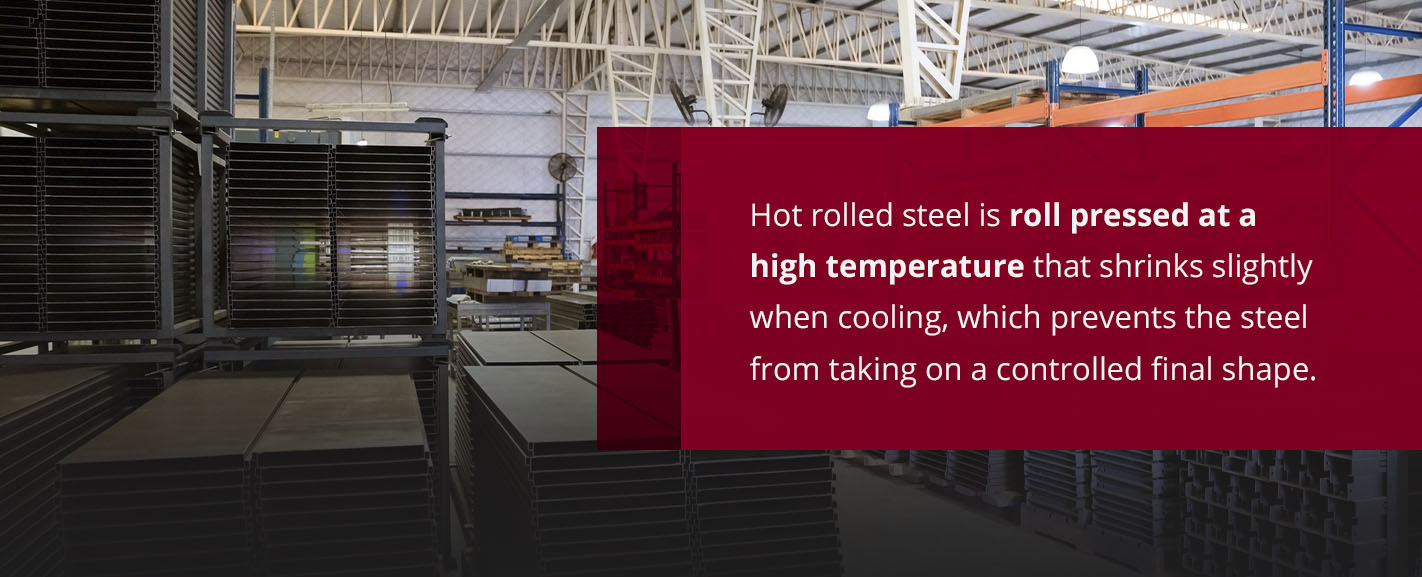

Last updated October 8, 2024. Originally published November 6, 2020.
Steel is a versatile material used for an infinite number of projects, from railroads to buildings and furniture. Steel rolling is a popular metal forming process that uses a set of rollers to alter the metal’s shape or enhance its mechanical properties. The process can be further categorized into hot rolling and cold rolling, which produces distinct types of steel with unique qualities, benefits and applications. Here is everything you need to know about hot rolled and cold rolled steel.
Hot rolled steel is a steel product roll pressed at a high temperature that exceeds its recrystallization temperature. When steel is exposed to temperatures higher than the recrystallization temperature, the heat removes carbon from the steel, making it more malleable. Being more malleable means it can be shaped and formed easily, especially in larger sizes.
The heated steel shrinks slightly when it cools to room temperature and has a scaly surface finish. The finish can be removed by pickling, grinding, sandblasting or oiling the steel. At room temperature, hot rolled steel shrinks non-uniformly, providing limited control over the finished size and shape of the products.
Cold rolled steel undergoes the same fabrication process as hot rolled steel. However, after cooling, the hot rolled steel is further processed to make cold rolled steel. Further processing involves pressing the hot rolled steel using a series of rollers at room temperature. It eliminates the scaly texture of the steel and strengthens the material to be more durable.
Cold rolling requires a higher amount of pressure to compress the metal into the desired shape because it is no longer hot or malleable. Cold rolled steel has higher dimensional tolerances, and you can achieve more precise shapes by finishing, sizing and roughing. It also produces a wider range of surface finishes.
While manufacturing hot rolled and cold rolled steel follows a similar process, the two have distinct differences that make them ideal for various applications.
Cold rolled steel is stronger and harder than hot rolled steel. However, hot rolled steel is more ductile due to its higher carbon content. The cold working process also produces steel with tighter dimensional tolerances and superior resistance against tension breaking and deformation because of the great internal stresses the material is exposed to.
One of the major benefits of hot rolled steel is its lower cost. It’s more affordable because it is processed once and manufactured without delays. The lower finishing requirements also make hot rolled steel more affordable than cold rolled steel, and you can also enjoy economies of scale by producing hot rolled steel in large quantities.
Cold rolled steel is more expensive than hot rolled steel because it undergoes further processing. This additional processing results in a smoother surface finish and strengthens the steel bonds, making it a worthwhile investment for some applications. The price of cold rolled steel is also higher when more parts are produced because it is typically produced in small batches.

Hot rolled steel is roll pressed at a high temperature that shrinks slightly when cooling, which prevents the steel from taking on a controlled final shape. Its cost-effectiveness makes it the preferred option for applications where steel needs to be painted, powder coated or hidden. It can be used for projects that don’t require exact dimensions and large-scale applications like building structures and railroads. It’s also the best option for building agricultural equipment, automotive frames, plates and sheet metal.
Because cold rolled steel has a smoother finish, it’s great for precise shapes and aesthetic works like furniture. This steel is ideal for more precise dimensional measurements for sheet metal, tubing and bar stock. It’s used in many applications that require high precision and smooth, refined surfaces, including industrial manufacturing machinery, HVAC, data centers and conveyor systems. It’s also useful for making consumer electronics, appliances, outdoor furniture and automotive parts.
At PBZ Manufacturing, we produce high-quality steel products for a wide range of equipment, parts, products, tools and techniques. Our steel fabrication process involves shaping metal into final parts or products that meet your specifications and requirements. As a full-service metal manufacturing company, we aim to remove excess layers from your supply chain, including manufacturing, finishing, assembling and shipping.
Contact us today by completing our online form or calling 717-584-8767 if you have any additional questions about the two steel manufacturing processes.
Manufacturing is in our DNA. Since Paul B. Zimmerman opened his small welding and repair shop in 1947, we've remained true to our roots: metal manufacturers serving in the Spirit of Christ. We're committed to carrying forward the service and business principles that brought us here. We're also passionate about advancements in technology and continuous improvements to meet your needs. It's why we have expanded our manufacturing and assembly capacity and added new flat and structural lasers.
Our new logo honors this legacy while signaling an exciting future of advanced capabilities and expanded capacity. We're committed to giving your ideas shape. What can we make for you?